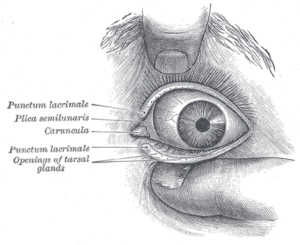Catalase test
This test detects the catalase enzyme present in most cytochrome-containing aerobic and facultative anaerobic bacteria. The catalase enzyme converts hydrogen peroxide ( H2O2 ) to oxygen and water. This reaction can be observed as the rapid formation of bubbles.
The reaction
2 H2O2 → 2 H2O + O2
Catalase positive organisms
| Gram-positive organisms | Staphylococcus, Micrococcus, Aerococcus urinae (Note: Aerococcus viridans is negative), Listeria, Corynebacterium diphtheriae Bacillus (to differentiate from aerotolerant Clostridium. which is negative) Nocardia Rhodococcus equi. Mycobacterium tuberculosis |
| Gram-negative organisms | Campylobacter fetus, Campylobacter jejuni, and Campylobacter coli. Enterobacteriaceae (Citrobacter, E. coli, Enterobacter, Klebsiella, Shigella, Yersinia, Proteus, Salmonella, Serratia) Pseudomonas |
| Fungus | Aspergillus, Cryptococcus |
Can we get a false-positive or false-negative reaction?
False-positive test
- Catalase test should not be performed on colonies grown on media containing whole red blood cells (e.g. blood agar). Whole red blood cells may contain catalase; the test could be false positive.
- Some strains of Aerococcus and Enterococcus may give a false positive reaction due to pseudocatalase formation.
- Some inoculating loops or wires (nichrome) can react with the hydrogen peroxide to produce false positive reactions.
- Dirty glass test tubes/ bijoux bottles can also produce false positive results.
False-negative test
- Older cultures: organisms in older cultures may give a false negative result. The catalase test should ideally be done from culture 18-24 hours old.
- Anaerobic bacteria – Cultures of anaerobic bacteria should be exposed to air for 30 min before testing
- Hydrogen peroxide is unstable and must be refrigerated at all times. Avoid any undue exposure to light to prevent a false positive result.
| Test methods – multiple methods are available: Tube or bottle method – put 4-5 drops of H2O2 in a test tube or bijoux bottle. Pick a few colonies with a sterile loop and rub them on the inside wall of the tube above the H2O2 . Cap the bottle/tube. Tilt the bottle to bring H2O2 over the colonies. Look for bubble formation. Agar slant method – Put 1 ml of H2O2 on a heavily inoculated 18-24 hr old culture on a nutrient agar slant. Replace the cap. Look for bubble formation. Other methods – Test on a glass slide or using a capillary tube Positive result – bubble formation Negative result – no bubble formation Safety: 1. The test may produce bacterial-laden aerosol – this test must be performed by a method (tube/bottle or agar slant method) or/and inside a safety cabinet. 2. H2O2 is corrosive; appropriate protection should be taken. |


